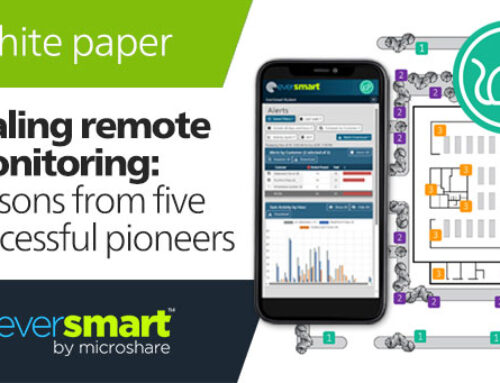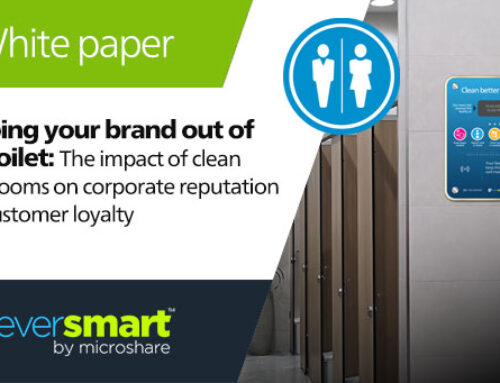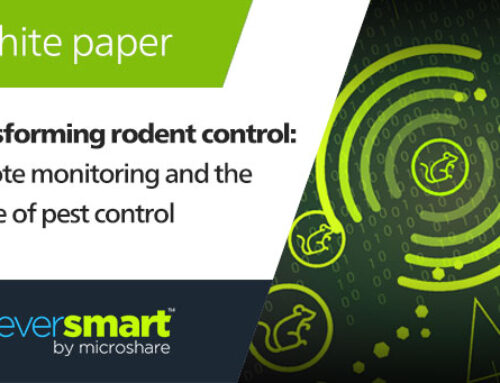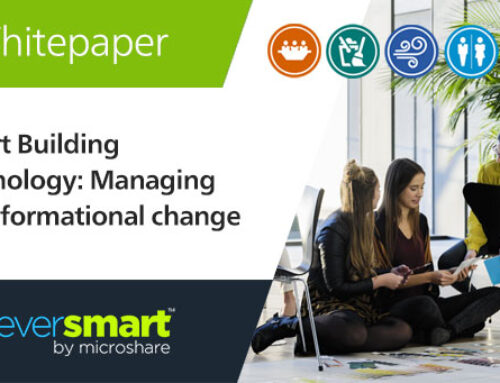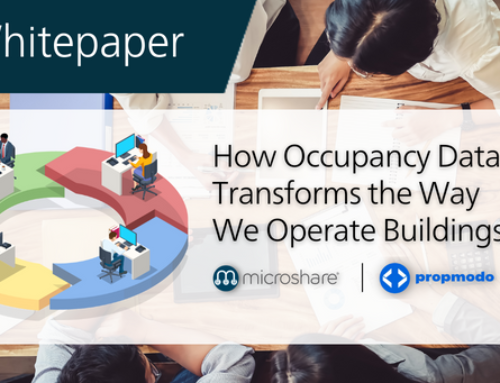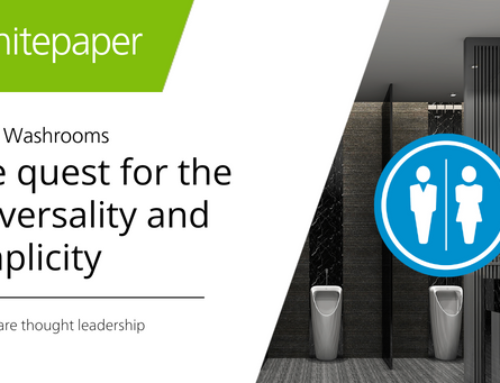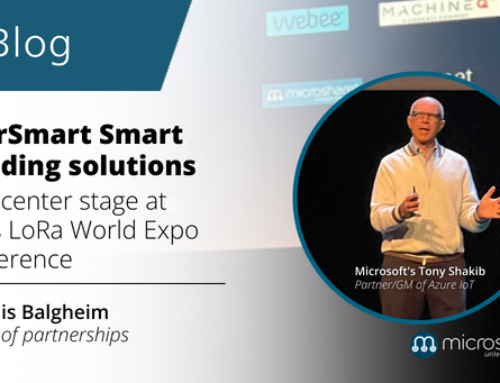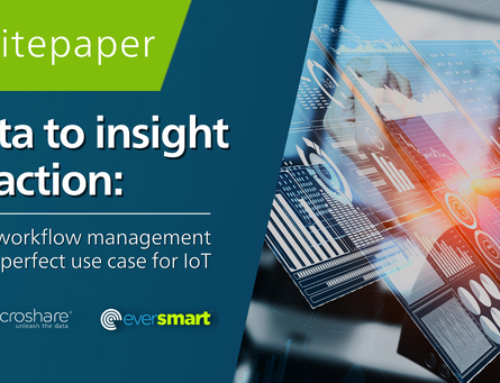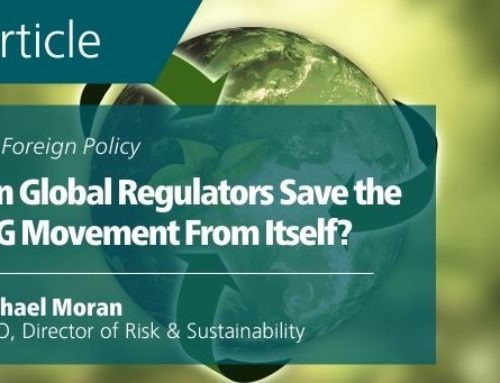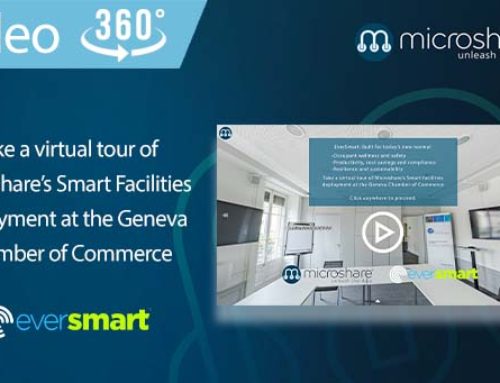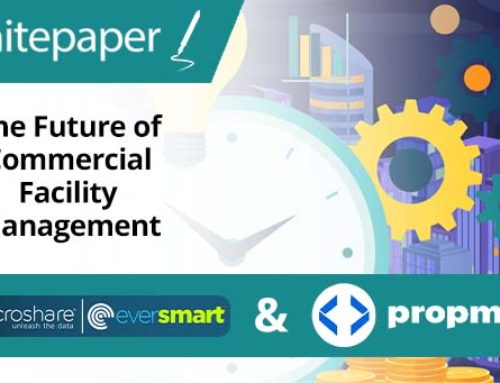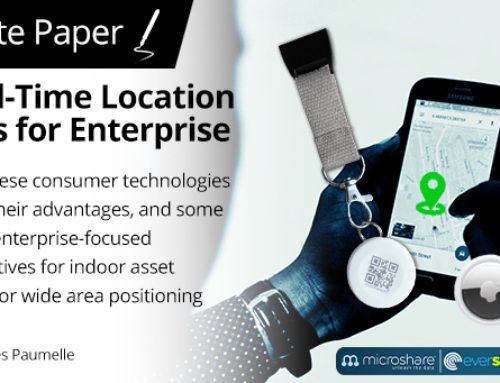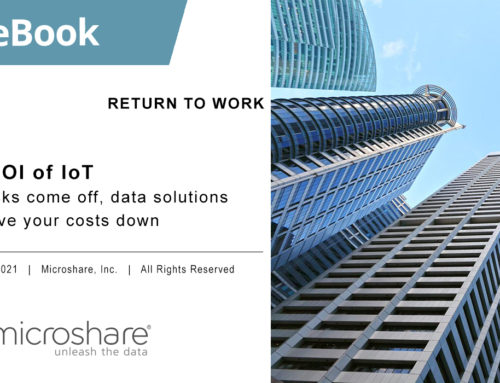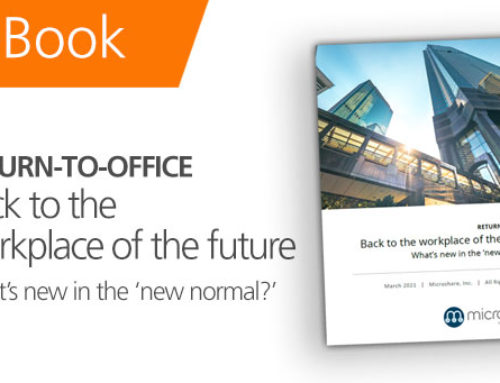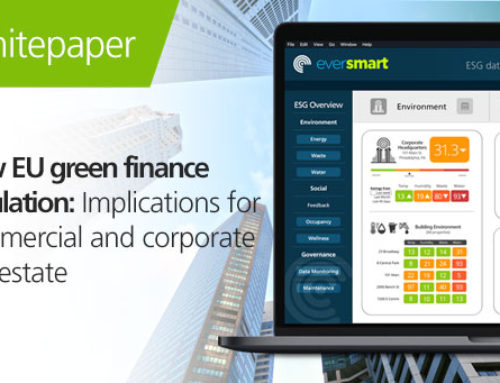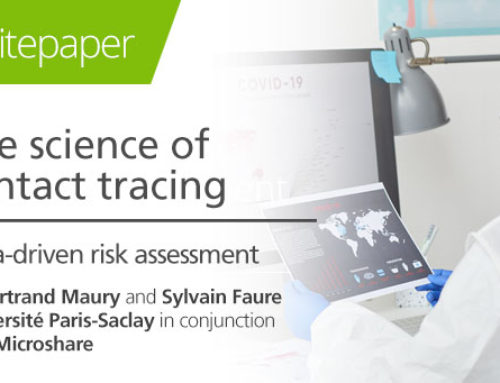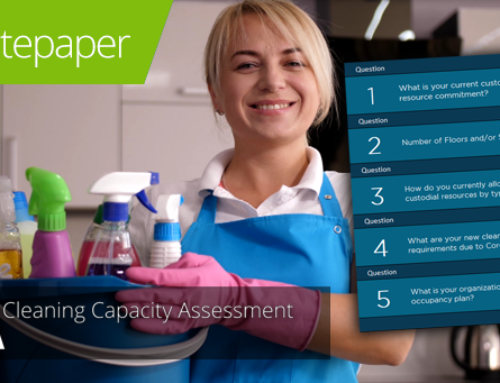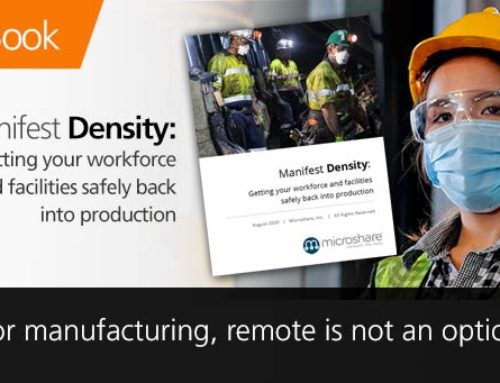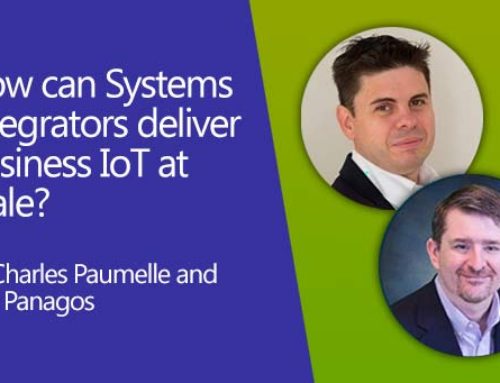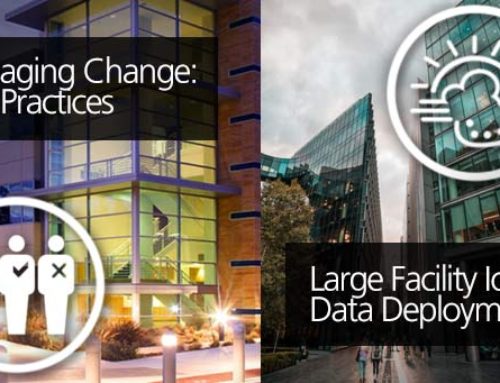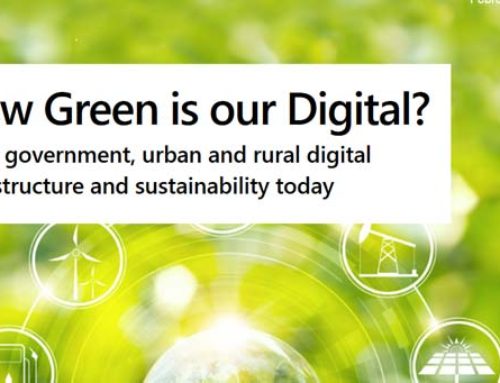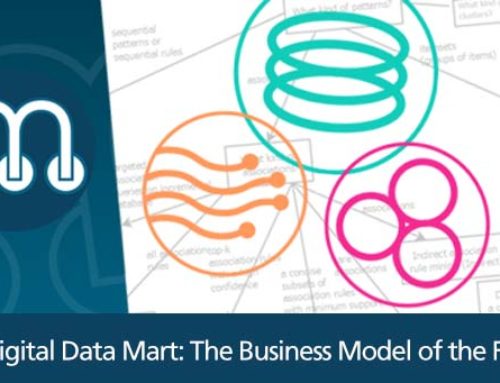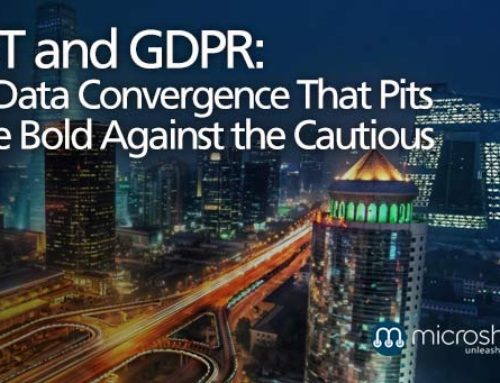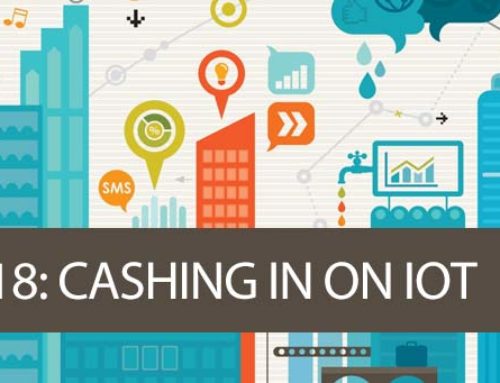
ESG: As Easy As IoT
Actually, Sustainability is Complicated. But Properly Managed IoT Data Is Where Smart Buildings Start
By Michael Moran
Executive Summary:
ESG – the fast-growing metrics that measure corporate performance on Environmental, Social and Governance issues – will soon be a requirement in the European Union and are becoming a necessity in the US market, too, as younger, more activist investors demand a commitment to sustainability. In commercial real estate, added pressure emanates from tenants, corporate clients and public sector leaders seeking to differentiate and to set a greener standard. For the managers of corporate real estate portfolios, outsourced facilities management firms and REITs, collecting accurate data on ESG metrics from buildings can be challenging. But the industry’s growing adoption of Internet of Things (IoT) sensors and “Smart Buildings,” moves largely driven by potential costs savings involved, can also provide a cost-effect solution to the collection of ESG data. Put simply, Smart Buildings are not the same as Green Buildings, but the goal of achieving the latter – especially in older structures – is enabled by IoT.
Introduction
Building. The word is both a noun and a verb, and that is an interesting thing these days. To build, the act of building something, suggests one of the most positive connotations of any action; building trust, building a community, building a nation, or a sustainable world.
But what of the noun: building? In its classical definition, the Cambridge English dictionary defines a building as “a structure with walls and a roof, such as a house or factory, to give protection to people, animals, or things.” A building thus described is inert, just a collection of materials that form an enclosure. But buildings were never the cold, dead structures described by dictionaries. Their walls bled, sweated and became afflicted with molds and cancers and infestations. Their floors moved and sometimes buckled; their roofs leaked, their pipes burst, and the air, the water, the electricity and other dynamic elements flowing through them were as dangerously alive as any human being. Yet for millennia, even those who sensed this reality had no way to visualize it.
A Living, Breathing Thing
Today, that definition is terribly outdated. Outfitted with sensors and smart systems, today’s buildings pulsate with life. The vital signs of a building – its body temperature, circulatory systems, its skeletal soundness and the quality of the oxygen it breathes – can now be drawn in real time from an inexpensive and resilient nervous system of Internet of Things (IoT) sensors into secure data displays. Those signals amount to a Bill of Health for a building, both in terms of basic physical and environmental performance, but also for purposes of sustainability. With ESG (Environmental, Social, Governance) metrics and reporting looming as a new requirement of regulators, accountants and especially investors, knowing with precision how your facility or portfolio stands in areas like air and water quality or waste management is no longer just a luxury or line item on a spreadsheet. It’s an increasingly crucial factor in your firm’s ability to attract clients, woo investors and mitigate reputational and regulatory risk.
And just as a doctor can diagnose illness or potential health concerns in human patients, the owners and managers of buildings today can watch as CO2 rises in a particular room, water leaks in a washroom, or vibrations increase beyond tolerable limits in a freight elevator.
We can know with certainty when a room is in use, when a window has been left unlocked, or a toilet is overflowing. We can provide simple data points on the availability of desks or conference rooms or parking spaces, track errant wheelchairs, luggage carts or cleaning equipment, know before time when furnaces or garage doors or HVAC systems need attention, prevent disease by monitoring water systems and refrigeration units, and vastly lower the costs of energy and the building’s carbon footprint through occupancy and usage data.
Most exciting of all, modern buildings, outfitted with a state-of-the-art data normalization and sharing platform, can collate all of this information in one place, and at scale, providing an empirical picture of the building’s carbon footprint, the durability and security of the organs that keep it heated, cooled and sanitary, and the health and well-being of the people, animals or things within.
Saving Money and the Planet, Too
![]() For the past five years, as the capabilities and battery life of IoT sensors have expanded and the cost of manufacturing and installing them has decreased, most of the attention has been on the potential cost savings that would be possible by realizing a more granular level of intelligence about a building’s usage or maintenance requirements. All of this is true: research by JLL, the world’s largest commercial real estate services firm, suggests that IoT data applied to large facilities can produce cost savings that roughly mirror its widely applied “$3-$30-$300” per-square-foot calculations regarding the costs of utilities v. rent v. salary in the sector.
For the past five years, as the capabilities and battery life of IoT sensors have expanded and the cost of manufacturing and installing them has decreased, most of the attention has been on the potential cost savings that would be possible by realizing a more granular level of intelligence about a building’s usage or maintenance requirements. All of this is true: research by JLL, the world’s largest commercial real estate services firm, suggests that IoT data applied to large facilities can produce cost savings that roughly mirror its widely applied “$3-$30-$300” per-square-foot calculations regarding the costs of utilities v. rent v. salary in the sector.
In effect, IoT devises that identifying energy waste can bring savings of up to $3 per square foot. Sensors that help optimize the use of space (or identify opportunities to downsize) can save $30 per square foot, and IoT devices that raise productivity by optimizing environmental conditions or raising satisfaction potentially produce as much as $300 per square foot.

While cost savings, preventative maintenance and efficiency have driven the huge increase in IoT enabled data systems and Smart Building initiatives, these systems have created in early adopters another unanticipated advantage: the ability to know with precision whether the facility is performing sustainably or if further investment is needed to bolster ESG ratings and avoid negative consequences.
The Coming Data Storm
At the moment, ESG lacks standards or even an agreed definition, particularly in the United States, where the adoption of ESG policies is being driven by market forces (primarily from activist millennial investors) rather than regulation. For most of these investors – the “E” in ESG, environmental and related issues remain the primary concern. In part, this stems from the increased prominence of climate-related risk that are on display after each weather-related disaster, as well as from the political debate over climate change more generally.
Environmental-related data from a facility helps determine a building’s carbon footprint, as does its commitment to recycling, and efficient waste and water use policies. All these things can be tracked with low-cost IoT sensors and collated with auditability. And large real estate industry firms have realized the value in reputation and resilience that such performance brings, whether it’s a green certification for a new building from LEED or the mitigating of wasteful and costly practices in an older facilities through energy efficiency, improved drainage and smart thermostats.

But ESG goes far beyond these environmental elements, and the regulatory requirements taking shape in Europe and Canada indicate that “voluntary” reporting is likely to be a thing of the past before long. In March 2019, the European Union put financial services, pension fund and other industries on notice that it will go ahead with legislation requiring ESG reporting and creating strict rules around how such data is collected. Currently, corporate ESG reporting is largely voluntary and often results in inconsistent metrics. In the worst cases, omissions, fabrications and marketing ploys are used to “greenwash” corporate reputations, a practice the EU regulations specifically hope to penalize.
Standardization is coming in the US, too. While it could take time for US regulations to pass Congress, legislation standardizing corporate requirements for ESG reporting is being drafted by the US House Financial Services Committee. Industry, too, has tried to get ahead of the curve. Nareit, the most prominent US REIT industry association, began hosting an ESG Forum in 2018 and has encouraged its members to embrace the concept and not get caught behind the eight ball.
Even without specific US ESG regulation, the experience of the European Union’s General Data Protection Regulation (GDPR) should be instructive. GDPR, while an EU law, compelled any firm doing business in the huge economic bloc to comply, and thousands of US corporations chose to do so rather than risk penalties that could amount to 20 percent of annual revenue.

As with all new regulation, complying with these complex new requirements will cost money. The global law firm Baker Donalson outlines what it regards at the 14 most important ESG indicators in each of the three categories – Environmental, Social and Governance below. For commercial real estate and facilities management, over half these metrics can be reliably measured and collated with precision and in real time with IoT sensors, and several others will benefit from relevant data.
Equally important, the impact of policy changes or investments upgraded, more efficient can be similarly measured, providing a reliable way of gauging and reporting improvements in a building or portfolio’s ESG quotient. As the ESG profile of your building goes from a “nice to have” to a regulatory requirement, this will only grow in value.
How IoT Enables ESG
Self-flushing toilets, motion activated lighting and faucets have been around for a while, but only in the past five years has commercial real estate began to invest in applications enabled by IoT data, which has been widely deployed by the manufacturing, transportation, and other sectors. The marriage of IoT and ESG, too, began outside the commercial real estate industry.
 Engineering firms General Electric and Siemens have used IoT for over a decade now to monitor critical components in turbines, locomotive engines and other heavy equipment. Swiss inventory management firm Arviem, for instance won the 2017 Green Supply Chain Award for a platform that tracks international shipping cargo in real time, calculating carbon impact and other metrics by product. And everyone from small landscaping firms to large factories have deployed IoT to geo-ring fence their property to track down key equipment and to prevent expensive assets from leaving the premises.
Engineering firms General Electric and Siemens have used IoT for over a decade now to monitor critical components in turbines, locomotive engines and other heavy equipment. Swiss inventory management firm Arviem, for instance won the 2017 Green Supply Chain Award for a platform that tracks international shipping cargo in real time, calculating carbon impact and other metrics by product. And everyone from small landscaping firms to large factories have deployed IoT to geo-ring fence their property to track down key equipment and to prevent expensive assets from leaving the premises.

For commercial real estate, now embracing IoT in a big way for the first time, the data these devices produce makes it possible for to go beyond energy efficiency and asset tracking and move into a full suite of sustainability solutions. Again, happily, these same solutions often involve installation of precisely the same sensors that bring cost savings and other improvements.
Deloitte, the global consultancy, believes the wave of investment in IoT and other “proptech” has only begun. In its 2020 Outlook for commercial real estate, the firm found that real estate investments across the sector planned increased outlays for IoT and other technologies in the coming year. Driving these decisions, they said, was “tenant experience,” a reasonable euphemism for the “Social” metric in ESG.
Rigging for Success
With cost savings and efficiencies already driving IoT projects across the commercial real estate sector, the added value of driving sustainability across your business is a no-brainer. Smart companies with long horizons have already taken steps to rig for success in a future when not only regulatory agencies but also their customers will increasingly demand ESG be reported accurately and that steps be taken to improve those metrics year-over-year.
Larry Fink, the Chairman and CEO of Blackrock, the world’s largest owner of commercial real estate, made his firm’s position clear in his annual letter to CEOs and investors in early 2019.
In a recent survey by Deloitte, millennial workers were asked what the primary purpose of businesses should be – 63 percent more of them said “improving society” than said “generating profit.” In the years to come, the sentiments of these generations will drive not only their decisions as employees but also as investors, with the world undergoing the largest transfer of wealth in history: $24 trillion from baby boomers to millennials. As wealth shifts and investing preferences change, environmental, social, and governance issues will be increasingly material to corporate valuations. This is one of the reasons why BlackRock devotes considerable resources to improving the data and analytics for measuring these factors, integrates them across our entire investment platform, and engages with the companies in which we invest on behalf of our clients to better understand your approach to them.
Don’t wait until the SEC or the European Union tells you to do it. This future is upon us. IoT and the data its inexpensicve, long-lasting sensors generate is a key building block to sustainability. Rig for success today.

Michael Moran is Microshare’s Chief Sustainability Officer and Director of Communications.

